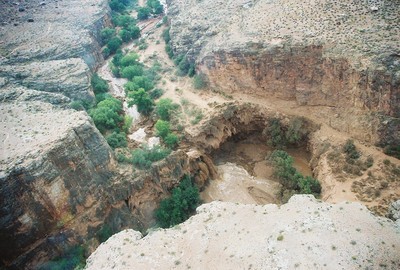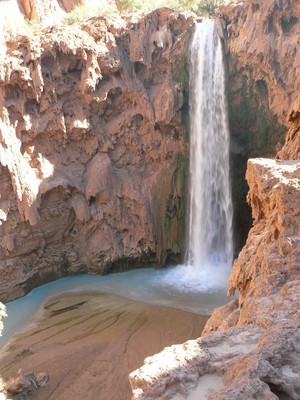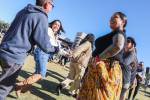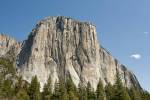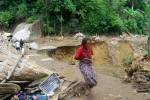Shocking sight awaits visitors to waterfalls
FLAGSTAFF, Ariz. -- An American Indian reservation deep in the Grand Canyon has long been known for its towering blue-green waterfalls, but returning tourists will be greeted by an altered landscape.
One waterfall is lost, another has taken a different course and new ones have formed after summer flood waters swept through the area and forced the Havasupai Tribe to close the popular destination to outsiders.
Tribal members have worked for months to clear debris, rebuild bridges and trails, and dig out the campground, picnic benches and other things covered by mud.
When tourists are welcomed back on Monday, they're being asked to keep an open mind in an area where water constantly changes the landscape.
"It will start to take on a different beauty, a different look," said Charlie Chamberlain, who delivers mail to the tribal village of Supai. "It may be more beautiful than it was before. We'll just have to wait and see."
The reservation is located west of Grand Canyon National Park and outside its boundaries.
The summer thunderstorm which touched off last year's flood didn't affect the park.
Tourism officials have had to schedule and reschedule planned trips to the reservation as the tribe pushed back its opening date. Those who hope to travel there might have to wait a while, though. Reservations at the lodge and campground are booked through mid-July.
Tourists are drawn to the reservation not only by the waterfalls, but also by its beauty and simplicity. Located deep in a gorge, Supai is the only place in the country to have its mail delivered by mule train, and it is accessible only by foot, mule or helicopter.
Much of the damage from the mid-August flooding that forced the evacuation of hundreds of tourists and tribal members was below Supai. The village sits well above the Colorado River tributary of Havasu Creek, which runs through the main campground and has been prone to flooding.
Though not as much water rushed through the area as in previous floods, it proved disastrous.
Stephen Hirst, who lived in Supai for 11 years with his wife and wrote a book about the tribe, said the changes to the landscape are shocking.
"It's just breathtaking," he said. "It's enough to make you cry, and a lot of Havasupai people did when they saw what had been destroyed."
The most noticeable changes to the landscape will be the waterfalls and the campground, where several feet of mud and silt destroyed shrubs and grass and covered picnic tables and water sources.
Tribal Vice Chairman Matthew Putesoy said some of the same camp sites will be available, though campers might have to develop sites on higher ground.
Those wanting to take a dip in blue-green pools that form below the towering waterfalls will have fewer options.
Workers placed sandbags at the base of Havasu Falls, one of the most photographed of the waterfalls, so that the travertine that creates the blue-green pools at the base could build up. Its once symmetrical flow now emerges sideways.
"That beautiful picture that everyone sees that is world renowned, it don't look like that anymore," said Chamberlain, whose wife is a tribal member.
Nothing could be done for Navajo Falls, where floodwaters eroded and redeposited sediment in a way that redirected the water past the falls.
The waterfall named for a Supai chief once fell from 75 feet into a blue-green pool.
Getting to Mooney Falls, the highest of the falls, has always been tricky, but floodwaters left the ground even more unstable and tribal members haven't been able to restore the pool, Hirst said.
"That one may re-establish on its own," he said.
At another waterfall, 50-Foot Falls, the travertine eroded, moving the waterfall back closer to the community.
Two new waterfalls formed in a deep gorge cut by the floodwaters.
Putesoy said tribal members have worked to make the area as safe as possible for tourists and are eager to welcome them back.
"It's been a long time," he said. "It's been nice and quiet, too, but we look forward to it."
Two water gauges that were installed last year near Supai might give some tourists and residents reassurance that they'll have time to evacuate in the event of more flooding.
Tribal members also were mindful of the upcoming monsoon season when booking reservations, scheduling fewer people than previously were allowed, said Heather Uqualla, who works in the tribe's tourism office.
"We don't want to go through what we did last summer," she said.



